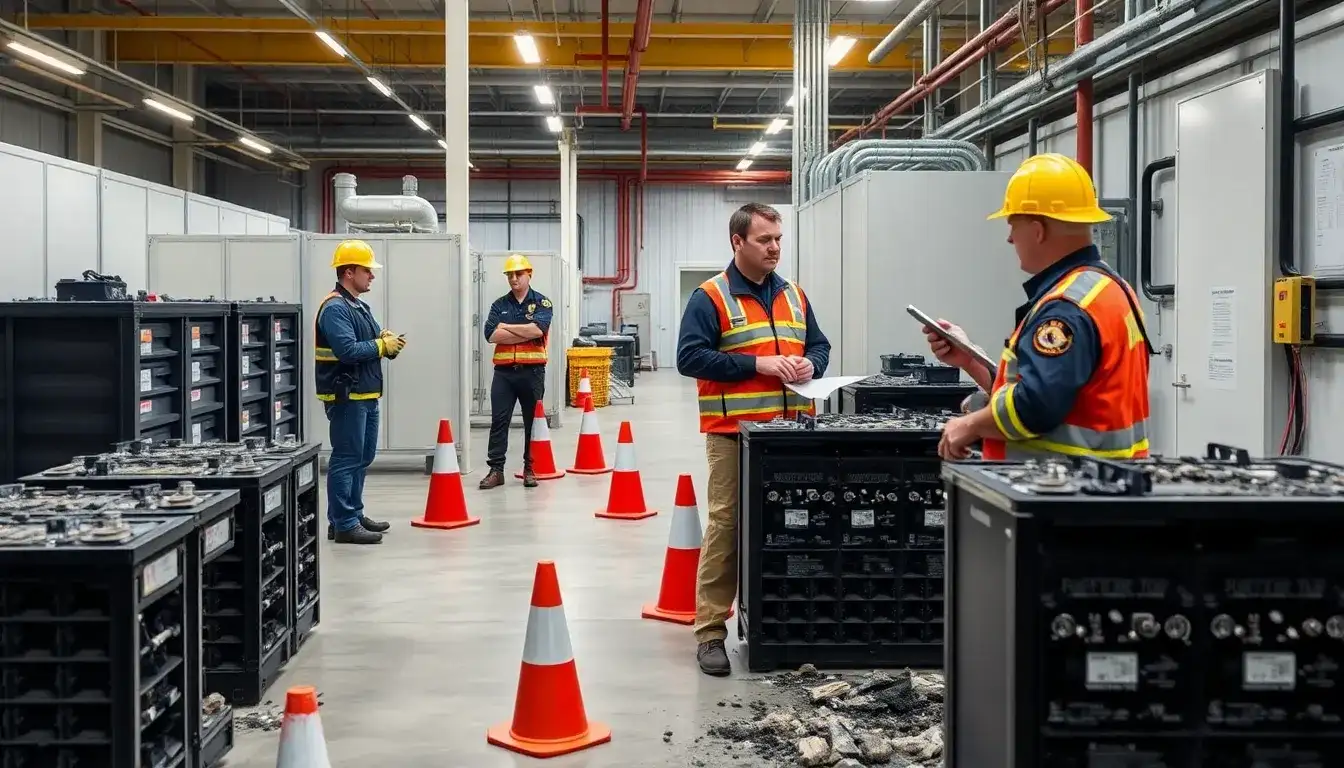
The California Public Utilities Commission (CPUC) has announced a proposal aimed at enhancing the safety of battery energy storage facilities as investigations begin into a recent fire at the Moss Landing Energy Storage Facility. On January 27, 2025, California Assembly member Dawn Addis held a press conference to introduce Assembly Bill 303 (AB 303) in front of the facility’s smoke stacks.
The proposal includes the enforcement of Senate Bill 1383 (SB 1383), which mandates the CPUC to establish and enforce operational and maintenance standards for electricity storage facilities owned by electrical corporations or located within the state. Additionally, it seeks to enhance oversight of emergency response plans for battery storage facilities under Senate Bill 38 (SB 38).
This initiative modifies General Order 167, which regulates the operation and maintenance of electric generation facilities in California. SB 38, signed into law by Governor Gavin Newsom in October 2024, requires battery storage owners and operators to implement emergency response plans and establish communication protocols with first responders. The proposed revisions would grant the CPUC increased oversight authority.
A vote on the proposal is scheduled for March 13, 2025. This announcement comes in the wake of a fire that broke out at the MOSS300, the 300MW/1,200MWh Phase 1 of the Moss Landing Energy Storage Facility in Monterey County on January 16, 2025. The fire destroyed nearly all of MOSS300, though the second and third phases of the 750MW/3,000MWh facility and a nearby combined cycle gas turbine power plant remained unaffected. The incident prompted the evacuation of 1,200 to 1,500 local residents, road closures, and air quality monitoring by the Environmental Protection Agency (EPA) for hydrogen fluoride gas levels in the vicinity.
Fortunately, there were no reported injuries or fatalities. However, the event was referred to as a “wake-up call for the industry” by Glenn Church, a Monterey County supervisor. He acknowledged the necessity of battery storage for sustainable energy but stressed the importance of ensuring safety to prevent similar incidents from happening in the future.
Project owner Vistra Energy announced that it would conduct a thorough investigation, including determining the root cause of the fire. Additionally, local Assembly member Dawn Addis called for an independent investigation, a request that was later supported by Governor Newsom. The CPUC confirmed that its Safety and Enforcement Division (SED) has begun its investigation, seeking information and updates from Vistra Energy, and conducted a site visit on January 22.
California is home to more large-scale battery energy storage systems (BESS) than any other U.S. state, with cumulative installations surpassing 13GW of mostly 4-hour duration systems as of October 2024, according to the California Energy Commission (CEC). Although fire incidents are uncommon—data from the U.S. Electric Power Research Institute (EPRI) indicates that the rate of BESS failure incidents, including fires, has decreased by 97% from 2018 to 2023—California’s lawmakers and communities are keen to minimize risks as much as possible.
In conjunction with the fire incident, Assembly member Dawn Addis introduced AB 303, known as the “Battery Energy Safety & Accountability Act.” This legislation proposes to eliminate provisions that allow individuals proposing battery energy storage facilities with a capacity of 200MWh or more to apply for certification directly with the California State Energy Resources Conservation and Development Commission, bypassing local authority permitting requirements.
AB 303 would also require that BESS projects of this scale be situated at least 3,200 feet from sensitive receptors, as defined by the California Air Resources Board, which include children, the elderly, and individuals with respiratory issues. Moreover, the construction of these facilities would be banned in environmentally sensitive areas. This legislation parallels a previous bill introduced by Addis to prevent oil and gas operations from being established near communities and environmentally protected regions.
The Moss Landing Energy Storage Facility is located in one such environmentally sensitive area, chosen for its proximity to existing grid infrastructure where a fossil fuel power plant had been situated for decades. Meanwhile, Vistra Energy is pursuing state permitting for its proposed 600MW/2,400MWh project in Morro Bay, located about 240km south of Moss Landing. This project will also be built on the site of a former fossil fuel power plant that closed in 2014.
Vistra proposed the BESS facility in 2020 and has since presented its plans to the Morro Bay City Council, alongside a safety report reviewed by quality assurance firm DNV, which concluded that even a “credible worst-case scenario would not pose significant health or safety risks to the public.” However, with the introduction of AB 303, the final decision on the BESS project would shift from Vistra to the CEC and California Coastal Commission (CCC). In addressing the fire at Moss Landing, Addis expressed her inability to support the Morro Bay project after witnessing the recent incident.
Additionally, the Morro Bay City Council recently voted to block any BESS project proposals within its city limits, enacting an ordinance valid for 45 days, after which a decision will be made on whether to impose an additional two-year moratorium.
Original article by NenPower, If reposted, please credit the source: https://nenpower.com/blog/california-proposes-new-safety-standards-for-battery-storage-following-moss-landing-fire-investigation/


